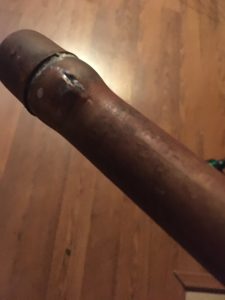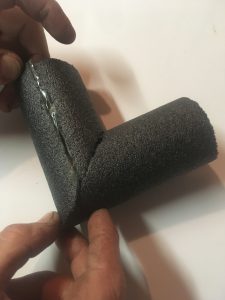Home plumbing pipes are easy to insulate and can protect your home from costly damage.
Do your water pipes have the proper insulation? As we face deepening winter temperatures, one problem homeowners and repair companies face is water pipe damage. Whether it be domestic pipes running your household water going to your sinks and faucets or coming off your hot water tank or the condensate drain off the air conditioning unit in your attic, some interior household plumbing can be at risk for condensation or freezing.
The side effects of condensation on pipe and freezing pipes can cause major (potentially costly) property damage. However, taking the time to properly insulate your pipes can make a world of difference.
Why Insulate #1: Risk of Condensation
The term “pipe insulation” might lead you to believe the primary reason to insulate your pipes would be to prevent them from freezing. Thermacell will thermally protect the pipe, but its primary purpose is to protect it from the ambient environment in which it’s contained.

Considering the water flowing through the pipes is say, 50-55 degrees, if it’s in a very warm environment, in the 90’s or so, and it’s relatively humid outside, those pipes would be prone to sweating or forming condensation on them. If those pipes run through, say, a dropped ceiling where you have ceiling tile in there and it’s a conditioned environment, the pipe sweat can cause your ceiling tiles to stain, which can ruin the tiles and be both unsightly and costly to replace.
If you have a hydronic system for heating (baseboard heat, radiator heat) then you most likely have an attic air handler. The condensate drains on those air handlers drain the condensation that forms on the coil on the handler itself. That water is very very cold. In the summertime your attics can be upwards of 130 degrees. That very cold condensate water coming through the condensate drain, though it may be adequately drained, that pipe can form sweat/condensate very easily, causing costly damage to your home.
Why Insulate #2: Risk of Freezing

While not all domestic plumbing benefits from insulating wrap, there are specific situations where Thermacell can make a world of difference. Say your domestic water is in a crawl space underneath a mobile home unit or a camp. The conditioned space above it will create enough heat that it will thermally protect the water flowing through the system, however, it’s generally a good idea to wrap pipe insulation for on very cold days those crawl spaces become drafty and can equalize based on the outdoor ambient temperature. In those instances it’s good to wrap your pipes.
It’s also a good idea to thermally protect (wrap) pipes that located close to an outside wall, as well as to have a shut-off there so you can isolate the water from the outdoor hose bib. Then you really have no threat of the pipes freezing, as long as the basement or room is thermally protected.
How to use Thermacell to insulate your plumbing
There are various sizes of pipe insulation, all based on the outer dimension thickness of the tubing you’re trying to protect. For instance, ¾ inch plumbing copper has an outer dimension of ⅞ of an inch, so that is the size wrap you would buy.
Keith Specialty Store employees are eager to help you find just the right product to fit your needs. Call us at 800-705-8838 with any questions.
What you need:
Thermacell pipe insulation and a knife to cut through the insulation
Step 1:
Measure the plumbing you want to insulate. It’s a good idea to take a walk-through of the plumbing of your house and get an idea of how many feet of length of each size of pipe you have so you can buy exactly what you need.
Step 2:

Apply Thermacell to the pipes and pipe joints at risk for condensation or freezing. Cut the insulation material to fit around T-joints and fixtures (see video for how to easily make common cuts!). Remove the interior film to expose the glue and affix to your plumbing.
You’re all set! Enjoy your properly running water all winter.
Here’s some more info on insulating home plumbing:
- Why Do Freezing Pipes Burst? (LiveScience)
- How to Prevent Your Pipes from Freezing (Consumer Reports)
- Moisture Control Guidance for Building Design, Construction and Maintenance (EPA.gov)

